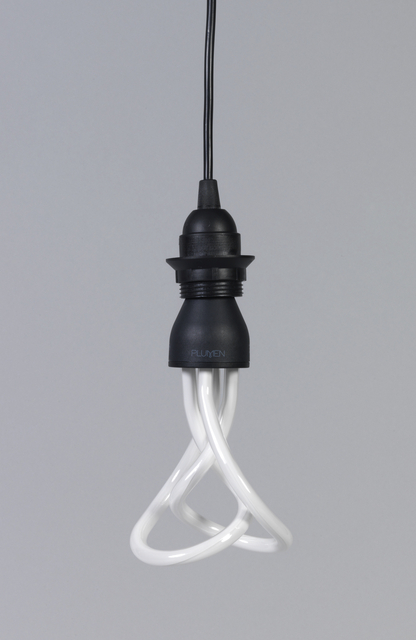Energy-efficient lighting technologies have seen growing consumer interest, given increased focus on the world’s environmental problems and new U.S. lighting standards that went into effect in 2012. CFLs (compact fluorescent lights) are a low-energy solution that have been on the market for some time, but arguably have not been the most attractive to consumers. Case in point: how many CFLs can you count in your home? It is not for lack of market exposure—the CFL is actually rooted in a 19th-century technology that was first patented by Peter Cooper Hewitt (brother of Amy, Eleanor, and Sarah Hewitt, the Museum’s founders). Today, CFLs are widely available to consumers at a relatively low cost. But they have traditionally been nothing more than a strictly utilitarian tube or spiral bulb meant to hide in a fixture, emitting a harsh, cold white light.
The Plumen 001, released to the market in 2010, is a rethinking of what the CFL can be. Designed by Samuel Wilkinson and Hulger, the bulb is composed of two looping CFL tubes that create a sculptural, organic form. Wilkinson explains he “wanted a shape that had an organized complexity… something that can first appear quite random, then as you move around it becomes more rational, and recognizable.”

Plumen 001 bulbs. Image from http://ukshop.plumen.com/products/plumen-001-bayonet-fitting.
A yellow tint mutes the harsh white light of the CFL, and the bulb boasts an 80% reduction in energy compared to a traditional incandescent, lasting 8 times longer. But its impact lies in that the Plumen is designed to be revealed, not hidden by a fixture or shade. It is a celebration of the bulb, almost appearing as if the designers scrawled in the air with light. And it encourages use—not due to moral obligation, but because finally, the CFL has been given some aesthetic kick.
